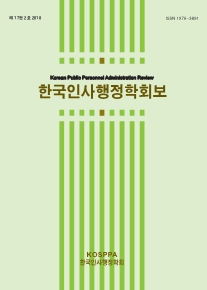본 연구는 조직구성원의 불공정성 지각이 이직의도에 미치는 영향력을 검증함과 동시에, 상사의 윤리성, 조직지원인식, 내재적 동기가 이직의도에 미치는 영향력을 불공정성 지각이 조절하는지를 실증적으로 분석하는 것에 목적을 둔다. 공정성은 우리 사회의 중요한 이슈로 논의되고 있으며 공직사회 구성원들의 조직 생활에 있어서도 예외가 아니다. 더욱이 젊고 유능한 공무원들의 이직이 문제되고 있는 현재에 이직의도에 대한 불공정성의 영향력을 검증하는 것은 학문적 기여 뿐 아니라 실제적 함의도 크다. 연구질문에 답하기 위하여 본 연구는 미국연방정부 실적제보호위원회(Merit Systems Protection Board)가 2021년 실시한 설문조사의 데이터를 활용하여 로지스틱 회귀분석을 실시하였다. 분석결과 불공정성 지각은 이직의도를 높이는 반면, 상사의 윤리성, 조직지원인식, 내재적동기는 이직의도를 낮추는데 기여하였다. 그러나 불공정성 지각은 이들 긍정적 요인들의 영향력을 감소시키는 것으로 나타나 불공정성이 이직의도에 직접적・간접적으로 모두 부정적인 영향을 미치는 것으로 나타났다. 본 연구는 이러한 분석결과에 근거하여 조직관리 차원의 함의를 제시한다.
The purpose of this study is to demonstrate the negative effects of perceived unfairness on turnover intention of U.S. federal employees. Fairness is one of the major values to be kept in public management, and one can expect its influence on turnover. Considering that turnover is a prominent issue to be dealt with in the public sector, one needs to pay attention to the issue of unfairness within organizations. Nevertheless, public management research has been slow to directly deal with unfairness issue. To fill the gap, the current research examines both direct and indirect effects of unfairness on employee turnover. Using the 2021 Merit Principles Survey data by the U.S. Merit Systems ProtectionBoard(MSPB), this research conducts a logistic regression analysis to demonstrate negative effects of unfairness. The analysis confirms the direct negative effect of perceived unfairness on turnover intention. Furthermore, it also shows that, under a high level of unfairness, the effects of supervisor ethics and intrinsic motivation decreasing turnover intention are reduced. The results imply the importance of facilitating fairness in organizational management, and we provide several practical implications.
Ⅰ. 서 론
Ⅱ. 이론적 논의 및 선행연구 검토
Ⅲ. 연구의 분석틀과 가설
Ⅳ. 연구방법
Ⅴ. 분석결과
Ⅵ. 결 론
참고문헌
(0)
(0)
